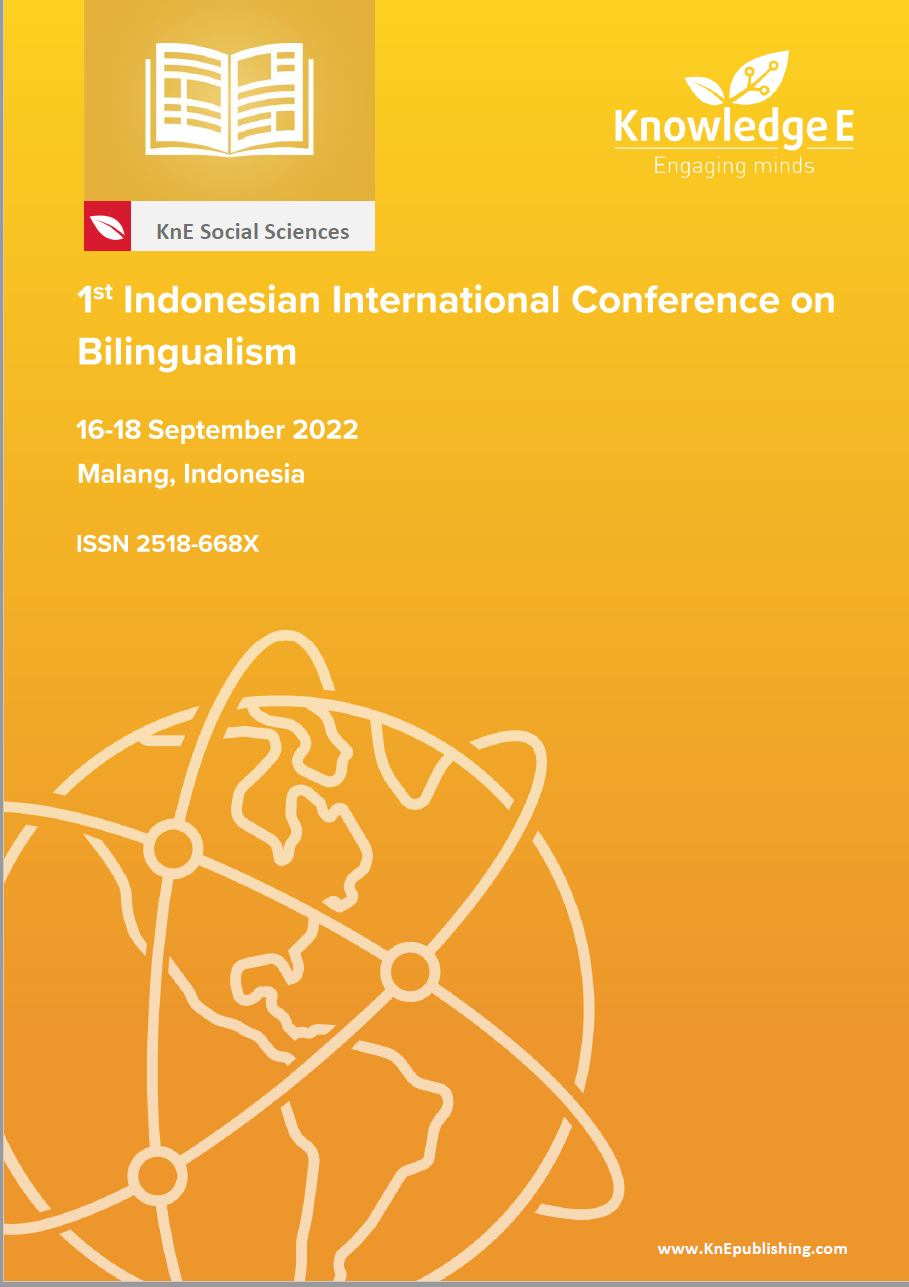Analysis of Gender, Economic Background, and Gaming Habit as Factors Contributing to Students' English Proficiency
DOI:
https://doi.org/10.18502/kss.v8i7.13255Abstract
This study aimed to investigate factors (gender, economic background, and gaming habits) contributing to students’ English proficiency in an international class program of a private junior high school in Malang, Indonesia. Twenty-four 8th graders were involved in this study. The data were collected through an English proficiency test and an online questionnaire. The analysis of multiple regression was taken from the questionnaire and students’ English proficiency test scores. The three aspects identified in the questionnaire were students’ gender, economic background based on their parents’ economic background, and gaming habits. The result showed no significant correlation between students’ economic background and gaming habits toward their proficiency test scores. However, gender indicates a significant correlation with the score of students’ English proficiency tests, where female students tend to have higher scores than male students.
Keywords: students’ English proficiency, International Class program, gender
References
[2] Catalán RM. Sex differences in L2 vocabulary learning strategies. Int J Appl Linguist. 2003;13(1):54–77.
[3] Cockerill M, Grieveson T, Bingham S, Higgins S. High achievement for socioeconomically disadvantaged students: example of an equitable education model in schools across five English districts. Int J Educ Res Open. 2021;2:1–8.
[4] Conteh J. ‘Funds of knowledge’ for achievement and success: Multilingual pedagogies for mainstream primary classrooms in England. In: Jenks CJ, Seedhouse P, editors. International Perspectives on ELT Classroom Interaction. London: Palgrave Macmillan; 2015. pp. 49–63.
[5] Conteh J, Brock A. “Safe spaces”? Sites of bilingualism for young learners in home, school and community. Int J Biling Educ Biling. 2011;14(3):347–60.
[6] Creswell JW. Research design: Quantitative, qualitative, and mixed methods approach. Singapore: Sage Publication; 2014.
[7] Curle S, Yuksel D, Soruç A, Altay M. Predictors of English medium instruction academic success: english proficiency versus first language medium. System. 2020;95(1):1–29.
[8] Dearden J. English medium instruction: A growing global phenomenon. Oxford: British Council; 2014., Retrieved from https://www.britishcouncil.es/sites/default/ files/british_council_english_as_a_medium_of_instruction.pdf
[9] Ernawati E, Sofendi S, Silvhiany S. English as a medium of instruction (EMI): A primary school teachers’ and students’ perceptions. International Journal of Research in Counseling and Education. 2021;5(1):24–32.
[10] Fox J, Cheng L, Zumbo BD. Do they make a difference? The impact of English language programs on second language students in Canadian universities. TESOL Q. 2014;48(1):57–85.
[11] Fuad AD, Wijaya SA, Wirawan G. Kategori dan ekspresi linguistik wadah berbahan dasar bambu pada masyarakat Jawa: kajian etnolinguistik. JSH: Jurnal Sosial Humaniora. 2018;11(1):27–38.
[12] Haidar S. Access to English in Pakistan: inculcating prestige and leadership through instruction in elite schools. Int J Biling Educ Biling. 2019;22(7):833–48.
[13] Hutchinson J, Robinson, D, Carr, D, Hunt E, Crenna-Jennings W, Akhal A. Education in England: Annual report 2018. Retrieved from https://epi.org.uk/wpcontent/ uploads/2018/07/EPI-Annual-Report-2018-Executive-Summary.pdf
[14] International school databases. International school in Indonesia. Retrieved from https://www.international-schools-database.com/country/indonesia
[15] Kim J, Tatar B. A case study of international instructors’ experiences of Englishmedium instruction policy in a Korean university. Curr Issues Lang Plann. 2018;19(4):401–15.
[16] Lafta Jassim L, Dzakiria H. A literature review on the impact of games on learning English vocabulary to children. International Journal of Language and Literary Studies. 2019;1(1):47–53.
[17] Lee S, Watt R, Frawley J. Effectiveness of bilingual education in Cambodia: A longitudinal comparative case study of ethnic minority children in bilingual and monolingual schools. Compare. 2015;45(4):526–44.
[18] McKay P. Assessing young language learners. Cambridge: Cambridge University Press; 2006.
[19] Meidasari V. The assessment and evaluation in teaching English as a foreign language. Indonesian EFL Journal. 2017;1(2):224–31.
[20] Meisani DR, Hamied FA, Musthafa B, Purnawarman P. Factors affecting Indonesian young learners’ English proficiency level. Teflin Journal. 2020;31(2):204–29.
[21] Musthafa B. Teaching English to young learners in Indonesia: essential requirements. Educationist. 2010;4(2):120–5.
[22] Musthafa B. Teaching English to young learners: through the eyes of EFL teacher trainers. ELT Research Journal. 2013;2(3):95–110.
[23] Sauce B, Liebherr M, Judd N, Klingberg T. The impact of digital media on children’s intelligence while controlling for genetic differences in cognition and socioeconomic background. Sci Rep. 2022 May;12(1):7720.
[24] Selvi AF. The medium-of-instruction debate in Turkey: oscillating between national ideas and bilingual ideals. Curr Issues Lang Plann. 2014;15(2):133–52.
[25] Tagarelli KM, Ruiz S, Vega JL, Rebuschat P. Variability in second language learning. Stud Second Lang Acquis. 2016;38(2):293–316.
[26] Walkinshaw I, Fenton-Smith B, Humphreys P. EMI issues and challenges in Asia- Pacific higher education: An introduction. 2017;1–18. https://doi.org/10.1007/978-3- 319-51976-0_1.
[27] Wan Z, Gao X. English or Chinese as medium of instruction? International students’ perceptions and practices in Chinese universities. Engl Today. 2020;36(1):37–44.
[28] Wang Q. A study of the influence of gender differences on English learning of senior high school students. Higher Education of Social Science. 2015;8(6):66–9.
[29] Yang KK, Lin SF, Hong ZR, Lin HS. Exploring the assessment of and relationship between elementary students’ scientific creativity and science inquiry. Creat Res J. 2016;28(1):16–23.
[30] Zein S, Sukyadi D, Hamied FA, Lengkanawati NS. English language education in Indonesia: A review of research (2011-2019). Lang Teach. 2020;53(4):491–523.
[31] Zhogi M, Kazemi SA, Kalani A. The effect of gender on language learning. J Nov Appl Sci. 2013;2(4):1124–8.

